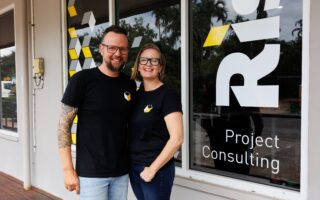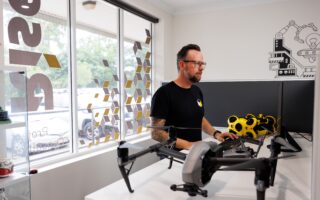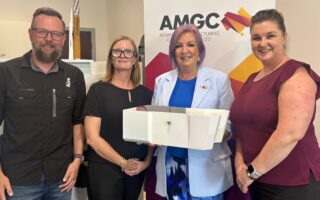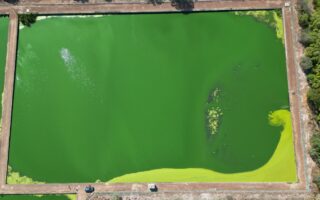Northern Territory developed technology to clean up global wastewater challenge
Northern Territory based Rise will advance the commercialisation of a fit for purpose Unmanned Surface Vehicle (USV) for use in global bathymetry surveys – the process of measuring and mapping wastewater ponds – with co-investment from the Northern Territory Government.
Rise’s USV will be designed and tested specifically for use in wastewater ponds without ‘inlet works’. These ponds, which are present worldwide and used in areas of high rainfall or small populations such as the NT, allow inorganic matter to pass into wastewater management systems by design. However, these ponds can be prone to heavy debris and existing monitoring solutions are incompatible in such circumstances.
Specifically developed to resolve this issue, Rise’s USV is intended to replace unreliable, unsafe, and unproductive methods of traditional pond surveys. Existing craft propellors can become entangled on debris, such as, organic or inorganic matter or dense weeds, or use more primitive methods whereby staff take measurements by prodding the bottom of wastewater ponds with a stick from a boat to determine sludge levels.
Rise and its team will introduce several crafts that float on rather than in wastewater. Rise’s USV will be fitted with the latest in technology, including sonar, GPS, and data logging capabilities to enable high-resolution 3D mapping of existing wastewater ponds to inform hydraulic performance allowing asset managers to determine when and how to desludge ponds, rectify issues, enhance asset performance, prolong asset life, and forward plan for upgrades.
Leaning in on advanced technologies including additive manufacturing (3D printing), automation, Artificial Intelligence (AI), digital data, and rapid prototyping, this project is expected to generate new roles at the company and position Rise to progress from the prototype to a commercial manufactured product, and scale.
Northern Territory Minister for Advanced Manufacturing, The Hon Robyn Cahill OAM said, “By investing in local businesses like Rise we are building the Territory’s capabilities in advanced manufacturing and supporting emerging industries to grow, which creates local jobs and attracts new investment,
“Rise is a great example of using innovation to modernise wastewater management, improve industry practices and be leaders in the development of fit for purpose Unmanned Surface Vehicles for global bathymetry surveys.” said Cahill.
Working in collaboration with Charles Darwin University’s Northern Australia Centre for Autonomous Systems (NACAS), the two entities will leverage Territory skills and equipment to design, prototype and test the novel solution in Darwin with a view to moving to manufacture and commercial sales to local, national and international customers in the future.
Stephen Goat, Managing Director for Rise said: “Support from the Territory Government via the AMEF will be transformational for Rise, not only will it mean that we can design, develop and prototype a product we know the world needs, but we can also manufacture it right here in the Territory.”
Rise’s project is the twelfth business to receive co-investment through the AMEF, which was launched in 2021. Across all projects to date, the AMEF has spurred manufacturing activity which is expected to create over 200 new jobs and generate over $100 million for the Territory’s economy in its first five years.
AMGC’s Northern Territory Director, Charmaine Phillips said: “Rise is another example of the highly capable yet small manufacturers that can be found across the NT. By tapping into the AMEF program and the connections it has across the Territory ecosystem, the company can pursue commercialising a world-leading product here in the Top End, all while generating prosperity and opportunities for Territorians.”
As part of the project, Rise has been awarded a $180,218 co-investment from the Northern Territory Advanced Manufacturing Ecosystem Fund (AMEF), administered by the Advanced Manufacturing Growth Centre (AMGC) in total. Accounting for matched cash contributions, the 12-month project will commit almost $370,000 towards establishing the new capability.




